Are you looking for railroad jobs in Utah? Sure Utah might have a minimal track, but there are railroad jobs at BNSF and Union Pacific. Let’s check out the Utah railroad industry.
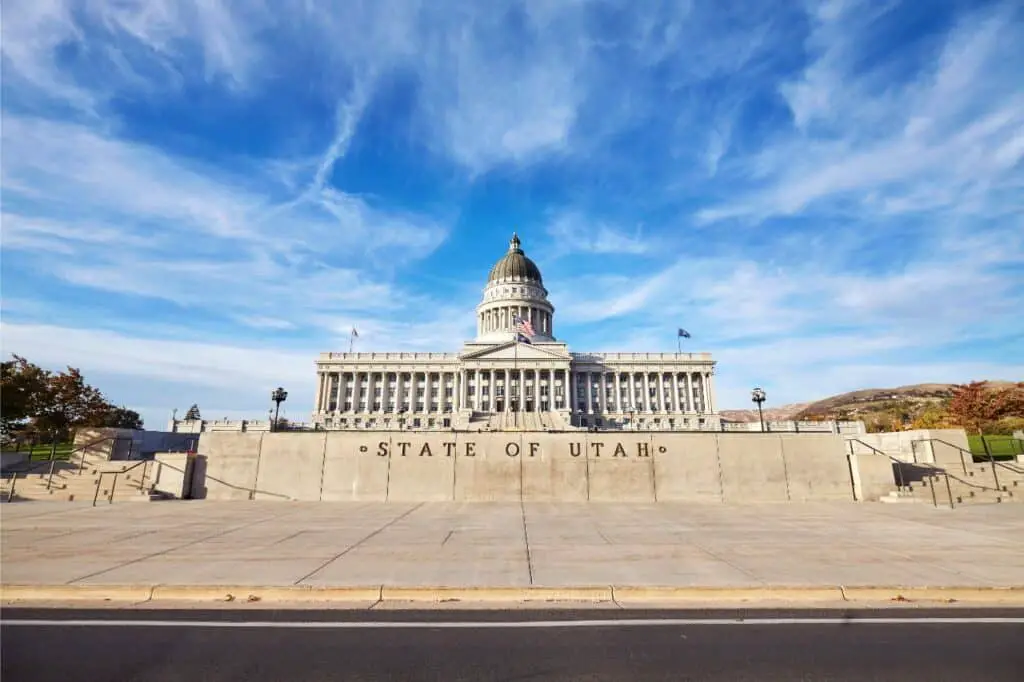
The state houses two major class I railroads. These are BNSF Railway and Union Pacific. These are your best and biggest bets on landing a railroad job.
Utah also houses one class II regional, the Utah Railway. And finally, the state has a few class III shortlines in its roster.
All in all, Utah’s railroads total 1,350 miles of trackage. At its peak, Utah had roughly 2,000 miles of trackage. So, expect that your odds are smaller than in other states. But, of course, there are still jobs on offer.
However, though, Utah marks a big name in the country’s railroad history. Utah is the location of the first transcontinental railroad’s completion.
The transcontinental railroad also changed the state drastically. This is especially true for Utah’s mining and agriculture businesses.
The rails cut, filled, and tunneled their way through Echo and Weber Canyons. It completely altered the landforms of the area.
Additionally, the train engines sparked wildfires during droughts. Wheat and cattle production was also boosted by railroad assisted exposure to global economies.
These sectors increased by 340% in the 1870‘s and mining also emerged in Park City and Alta.
Up until today, railroads still play a part in the state’s economy. And overall, the railroad sector is a good industry to start your career. So, we’re here to help you out with that.
In this post, we cover all the railroad companies that you can apply for. We also briefly discuss the sector’s impact on the economy.
And finally, we add in some must-read tips for new prospective railroaders.
Let’s begin.
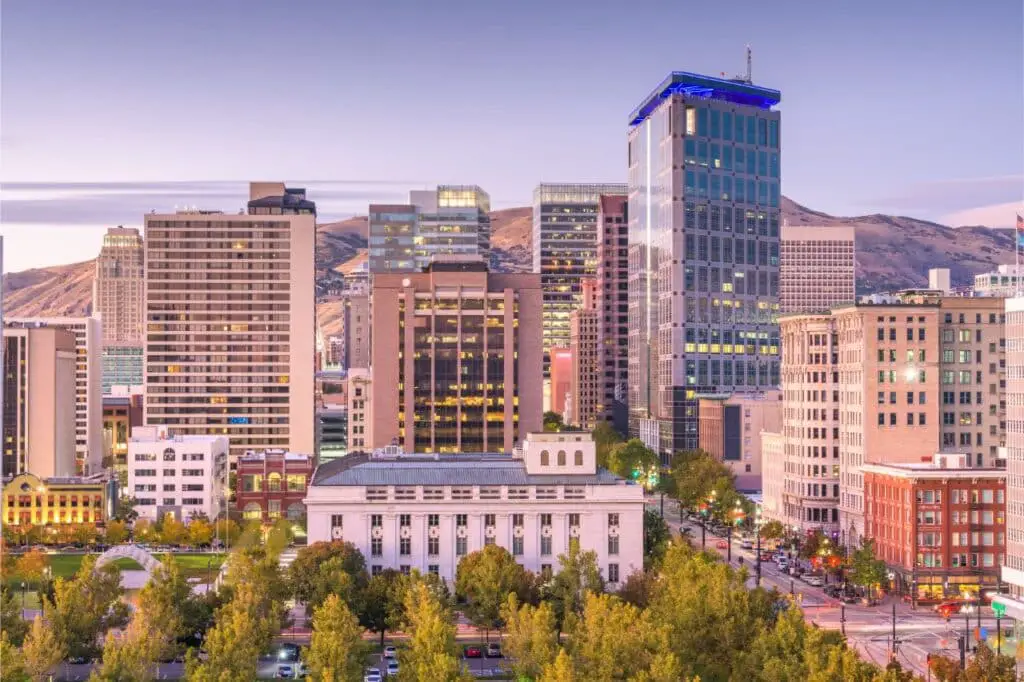
Utah’s Railroads: Its Economic Impact
First and foremost, Utah’s railroads are an essential part of the transportation network.
This alone already creates a big economic impact and Utah’s railroad optimizes the supply chain. Shippers, farmers, and businesses have access to a cost-effective and bulk transportation solution.
In fact, freight rail prices were 40% lower in 2021 compared to the 1980s. Therefore, shippers can carry more for the same amount that they did four decades ago.
According to the UIPA, freight demand is surging throughout the state. Salt Lake City has become one of the nation’s fastest-growing regions in the Western United States. And because of this, they predict that freight transportation will likely double in the state by 2045.
Privately-owned rail companies also help improve the overall transportation infrastructure.
For instance, Class I Union Pacific has invested millions in Utah capital projects.
Aside from transportation, Utah’s rails also affect many important economic variables.
Reducing pollution
Utah is experiencing tremendous population development. The state also has an ongoing construction of the Inland Port. Additionally, inversion builds up during the winter. Therefore, air quality is a major worry for residents.
Rails serve as a good solution to minimize these issues. Freight trains are four times better for fuel efficiency than trucks, which can cut emissions by more than 70%.
Let’s say 10% of freight was moved by rail instead of trucks. This equates to a drop of 17 million tons worth of emissions yearly. It’s also equivalent to growing hundreds of millions of trees.
Minimizes traffic congestion, and infrastructure upkeep, and saves taxpayer money
A single freight train can transport the cargo of hundreds of vehicles combined. This means that rails can greatly reduce highway congestion.
According to GoRail, Utah’s freight railroads can reduce up to 3.5 million truckloads off the highways yearly.
Consequently, it can lessen exorbitant highway development maintenance costs. In turn, saves taxpayer money.
Boosts jobs and offers competitive wages
The rail industry is clearly a big sector. A single Class I railroad alone can generate hundreds if not thousands of jobs.
Workers on freight railroads also earn some of the highest salaries in the country.
Class I employees earned a yearly average of $135,700 in 2020. This is higher than the total wage for sectors that employ 90% of American workers.
What’s more, railroad employees fall under the Railroad Retirement System.
Working For The Railroad Industry: What To Expect
This portion of the post is especially relevant for anyone new to the railroad business.
Not everyone is suited for a career in railroading. It may seem fun and recreational in the movies. This is true in some instances.
However, the industry presents obstacles that are not for the faint of heart.
Firstly, railroad work can be physically and emotionally aderous. Class I networks operate around the clock. Hence, majority of Class I jobs have longer, mostly 12-hour shifts.
Schedules are also uncertain. You may be required to go to work even on weekends and holidays. In other words, expect a big lifestyle change. You will spend an unexpected amount of time apart from your family.
But, as stated above, Class I jobs are among the highest-paying in the industry. In addition, they provide a variety of benefits and retirement options. Therefore, the sacrifice can be incredibly rewarding and worthwhile.
You are also provided with a wealth of education and professional advancement opportunities. If you work hard, you will possibly get promoted. After a few years, it’s even possible to earn six figures.
Here’s a list of the highest-paid railroad occupations to give you an idea.
You may work for shortlines or regionals if you fear working long hours. Some may provide a more consistent and regular schedule. Their wage remains competitive. However, it doesn’t measure up to class I railroad positions.
For these factors, some people decide that railroading is not for them. But ultimately, it’s up to you to outweigh the pros and cons.
Railroading requires a different outlook and a focus on the bigger picture. And it’s definitely not the kind of job that earns “easy money.”
Now, let’s have a look at your options for railroad jobs in Utah.
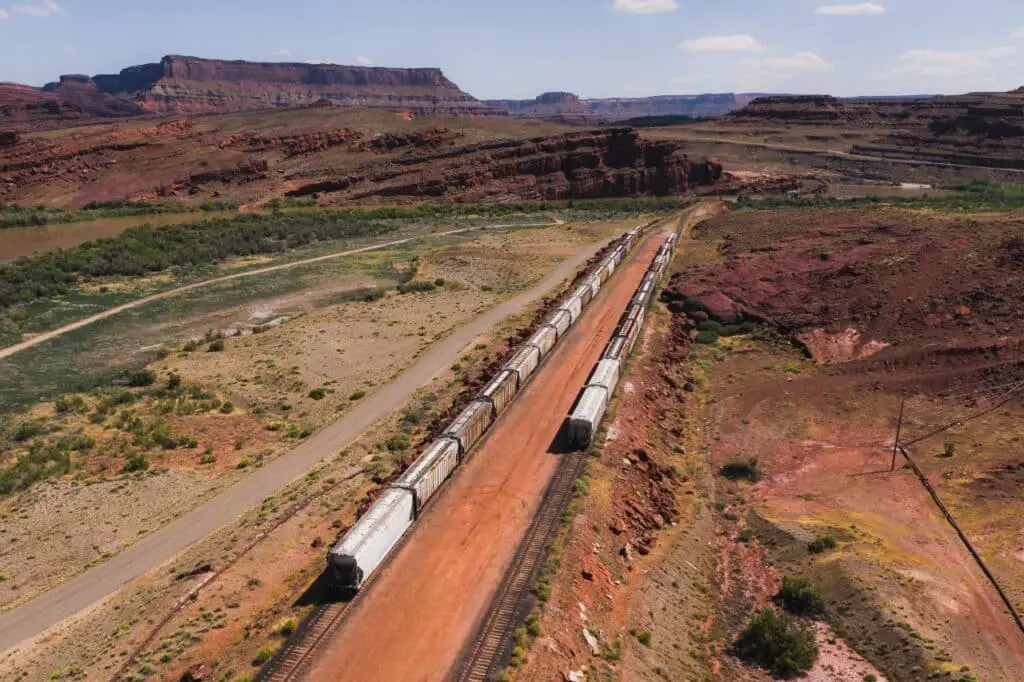
Class I Railroad Jobs in Utah
Burlington Northern and Santa Fe Railway (BNSF)
The BNSF Railway Company is one of North America’s seven Class I railroads. It maintains nearly 30,000 miles of trackage.
In addition, the firm manages railways in 28 U.S. states and two Canadian provinces.
BNSF is also the second-most extensive freight transportation railway in the country.
It carries a variety of commodities, including grain, coal, and multimodal freight.
Utah Railway, a connecting carrier, provides BNSF Railway with access to Utah’s coal mines. It has two loading terminals. These are the Savage Coal and Wild Cat Terminal.
They also do coal train interchanges at Provo (west route) and the Grand Junction.
The company is also recognized as among the best employers for Women in 2021. They were also awarded as a military and indigenous stem-friendly employer.
You can find employment opportunities at BNSF through their website. Click here to look for railroad jobs in Utah.
Union Pacific
Most of Utah’s track milage is dominated by Class I Union Pacific. As of 2021, it runs 1,267 miles in the state.
Since the 1860s, Union Pacific’s activities in Utah have expanded and shaped the state’s landscape. Union Pacific has a significant presence in Utah today.
Union Pacific’s main lines move in every direction through Salt Lake. It also moves a wide variety of commodities. This includes metals, minerals, coal, and more.
As a whole, Union Pacific is the second largest network in the country. It encompasses a total of 23 states. And overall, Union Pacific operates 32,100 miles of trackage.
Learn more about jobs at Union Pacific through their website. Click here.
Class II Regional Railroad Jobs in Utah
Utah Railway Co.
To this day, the Utah Railway maintains its original corporate offices in Martin. It also celebrated its 100th anniversary in 2012.
Not much has changed with this regional either. Presently, it still operates to its original principles. However, it does not carry as much coal as it did back then.
Utah Railway primarily hauls aggregate, cement, petroleum, and chemicals. Apart from its main line, it also has trackage rights with Union Pacific. Furthermore, it operates the old main line of the Rio Grande railway in Grand Junction.
And currently, they are a Genesee & Wyoming Inc-owned regional.
All in all, the Utah Railway totals 131 miles of trackage.
Learn more about them through Genesee & Wyoming’s website. Click here.
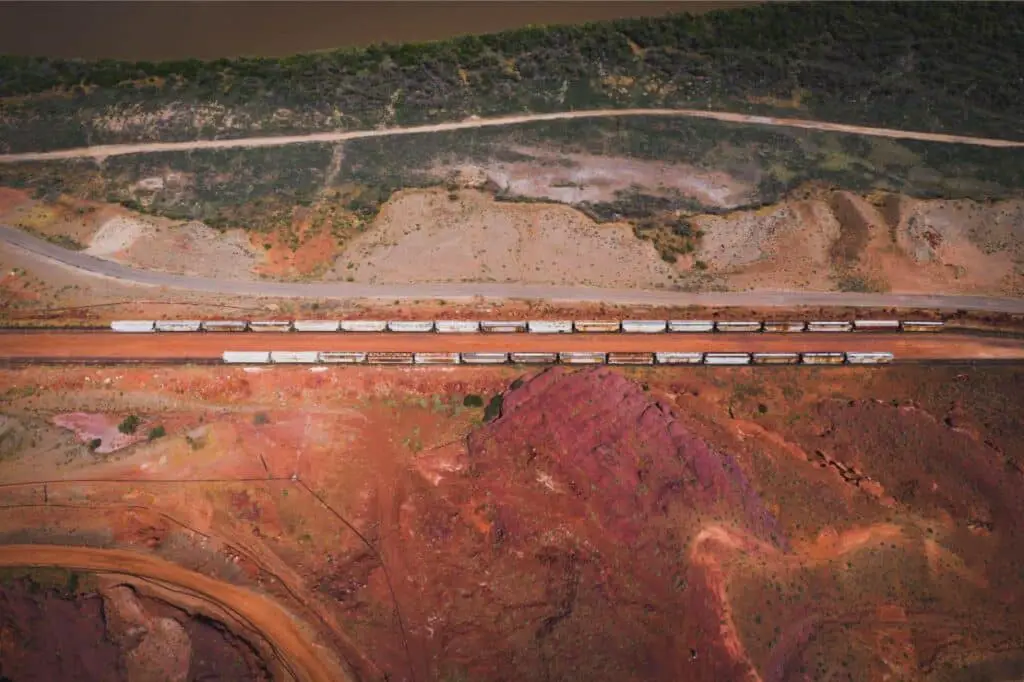
Class III Shortline, Terminal, and Switching Railroad Jobs in Utah
Deseret Power Railroad
The Deseret Power Railroad, or DPRW, is a privately-owned shortline. It’s also an electrified railway that does not have a signaling system.
This shortline mainly transports coal from Rangley to Utah.
All in all, this railway totals 33 miles of trackage.
Salt Lake City Southern Railroad
The Salt Lake City Southern is a Genesee & Wyoming-owned shortline. It has been around since the 1990s.
Overall, it totals 25 miles of trackage. It mainly services Salt Lake and Murray’s industries. It also hauls a broad range of commodities.
Salt Lake, Garfield & Western Railway
This shortline is also popularly known as The Saltair Route. Back then, it served both passenger and freight services. However, currently, it only provides freight switching.
It primarily serves the businesses in Salt Lake City, with Union Pacific interchanges.
All in all, this shortline has 10 miles of trackage.
Learn more about them through Patriot Rail’s website. Click here.
Savage Bingham & Garfield
This 21-mile track is a Savage-owned shortline. It commenced in 2007.
It serves Magna, Welby, Bacchus, Bagley, and Kearns.
Contact the company directly for employment opportunities.
Utah Central Railway
This is another Patriot Rail-owned shortline on this list.
The Utah Central totals 24 miles of trackage. Its routes stretch to Ogden and Relico.
Learn more about them through Patriot Rail’s website. Click here.
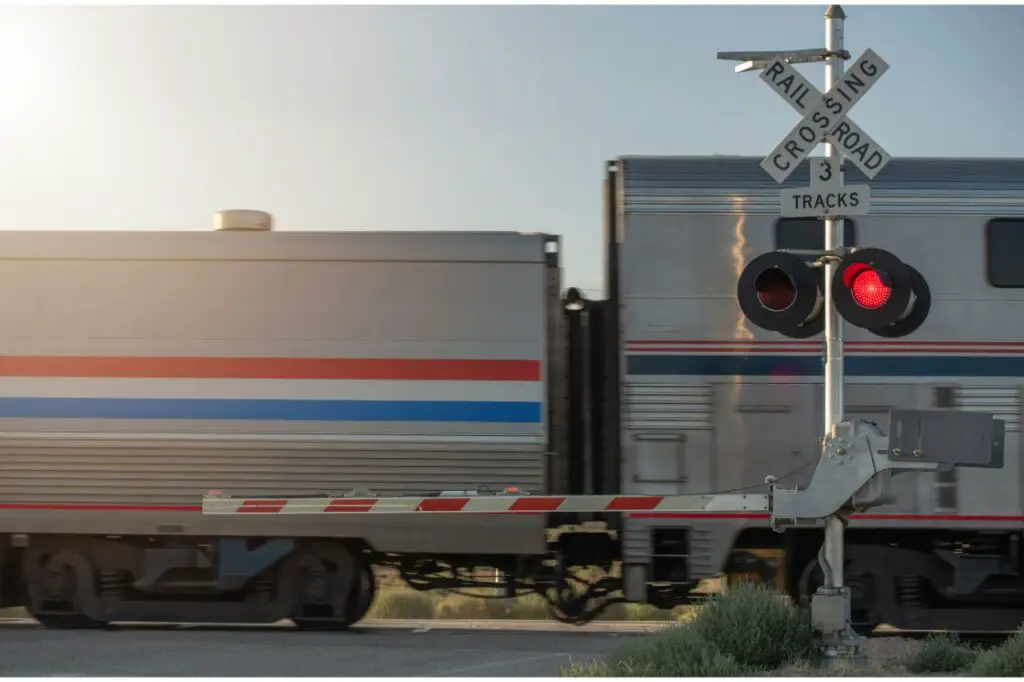
Start Your Journey As A Railroader With These Railroad Jobs in Utah!
When it comes to railroad jobs in Utah, you’ve got a fair share of options. Your biggest and best opportunities lie in the two major Class I networks. You also have one regional and a few shortlines to work with.
Be prepared for a challenging and sometimes rigorous job hunt. Expect companies to look for more specialized roles.
There will also be times when companies take a long time to respond. But, don’t give up.
If you’re expanding your search, however, we can help. Check out our state-by-state railroad job listings. Click here.
This wraps up our railroad jobs in Utah, we wish you the best of luck in your railroad career!

